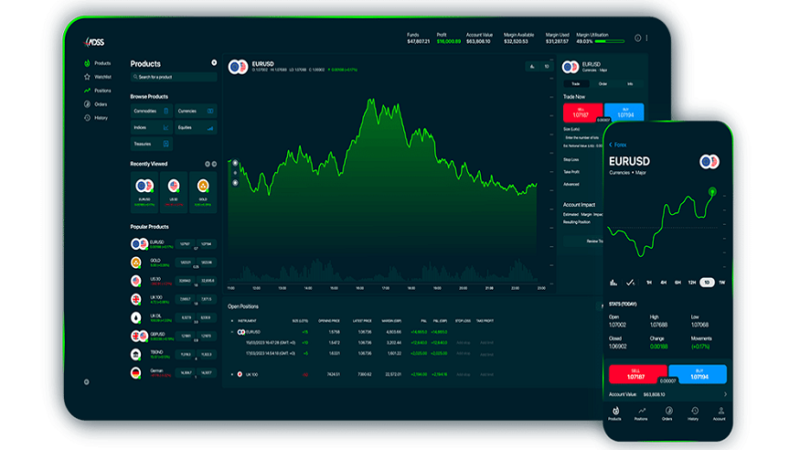What is Leverage in Forex Trading?

Leverage has become a popular topic among Forex traders, both novice and experienced, due to its potential for magnifying gains while also increasing risk. If used responsibly, leverage can be an effective tool to amplify your trading returns and potentially grow your account balance more quickly if done right.
In this article, we will discuss leverage in the context of forex trading and delve into how it works with a concise but thorough explanation. We will also look at some of the risks associated with using leverage and strategies you may use to ensure you remain within comfortable limits for your method of investment.
An Overview of Leverage in Forex Trading
Aspiring traders interested in the fast-paced world of foreign exchange will undoubtedly encounter the term ‘leverage’ in their forays into Forex trading. At its simplest, leverage is the amount of borrowed capital a trader uses to open a position in the Forex market. Put another way, it uses borrowed funds to amplify potential profits – and losses.
While leverage can unquestionably magnify rewards, traders must understand its risks before diving headfirst into the market. By leveraging market opportunities in their favour, Forex traders may have enhanced flexibility regarding capital allocation and risk management. Still, it is crucial to be cautious, exercise good judgment, and adopt a leverage rate that suits their trading style.
How Leverage Increases Profits
Leverage in Forex trading, when used correctly, has the potential to amplify gains significantly. Let’s take a closer look at how this works.
For instance, a leverage ratio of 100:1 implies that for every dollar in your trading account, you can control $100 in the market. With an initial investment of just $1,000, you can handle positions valued at up to $100,000.
Now, assuming that the market moves in your favour, even a small 1% gain in the value of your position would result in a profit of $1,000 rather than a mere $10 without leverage. It demonstrates why leverage can be incredibly enticing for traders seeking to generate substantial profits from even minor price movements.
By allowing you to control more significant positions with a smaller investment, leverage presents a unique advantage. However, it’s crucial to approach leverage cautiously and thoroughly understand the risks involved. It’s essential to have a solid risk management strategy in place to protect against potential losses.
Understanding Risk and Reward Ratios
While leverage can certainly increase potential profits, it also comes with significant risks. The higher the leverage ratio used, the larger the potential gains and losses become. This is why having a thorough understanding of risk and reward ratios is crucial in Forex trading.
The risk-reward ratio refers to the risk you will take concerning the potential reward. For example, if your risk-reward ratio is 1:3, you are ready to risk $1 for a potential profit of $3.
This ratio should be carefully considered when deciding on an appropriate leverage level.
Many experienced traders recommend using a risk-reward ratio of 1:2 or higher to help mitigate the risks associated with leverage. By setting a lower leverage ratio and sticking to your risk management plan, you can protect your trading account from significant losses.
Calculating Leverage for Your Trading Account
To calculate the leverage level used in your trading account, you need to divide the total value of your open positions by the amount of capital in your account. For example, if you have $10,000 in your account and have open positions with a total value of $100,000, then your leverage would be 10:1.
It’s crucial to regularly monitor your leverage level and adjust it according to your risk management strategy. As the value of your open positions changes, so does your leverage level, which is why it’s essential to stay on top of any fluctuations in the market.
Choosing the Right Amount of Leverage for Your Strategy
Choosing the right amount of leverage for your trading strategy is a crucial aspect of risk management in Forex trading. It’s essential to carefully consider the potential risks and rewards before deciding on an appropriate leverage ratio.
For beginners, start with a lower leverage ratio and gradually increase it as you gain more experience and confidence in your trading abilities. Many experienced traders suggest using a maximum leverage level of 5:1 to 10:1 for beginner traders.
As you become more comfortable with leverage and gain a better understanding of risk management, you can gradually increase your leverage ratio. However, it’s essential to stay within your risk tolerance and always have a solid strategy before increasing your leverage.
In Conclusion
Leverage can be a powerful tool in Forex trading when used correctly. It has the potential to amplify gains and allow traders to take advantage of market opportunities with limited capital. However, it’s crucial to exercise caution and have a thorough understanding of its risks before incorporating leverage into your trading strategy.






